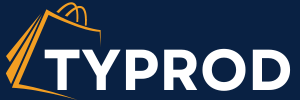As we navigate the rapidly evolving AI landscape in 2025, I wanted to share some observations from our ongoing journey at Furniture Bank. These aren’t definitive answers – just honest reflections on what we’re seeing, feeling, and learning as we explore how AI can help us end furniture poverty across Canada here in March 2025.
Our AI Exploration Journey
Like many nonprofits, we began with simple curiosity – experimenting with AI tools to see how they might help us tell our story and advance our mission. That curiosity has been incredibly valuable, leading to innovations like our “The Picture Isn’t Real, But The Reality Is” campaign where we used AI-generated images to respectfully illustrate furniture poverty.
This exploration reflects our broader commitment to innovation as we work to expand our impact beyond the Greater Toronto Area and address furniture poverty nationwide . Our journey with AI is just one aspect of how we’re continuously improving our approach through monitoring performance, gathering feedback, leveraging social enterprise models and impact measurement to make informed changes to better serve communities.
The Siren Song of “Easy” AI: A Word on Vendor Relationships
We’ve observed major tech companies creating increasingly attractive AI packages specifically for nonprofits – complete with special programs, discounts, and funding opportunities. They share their “Forward Looking Statement” and show a possible future that can be genuinely helpful, especially for resource-constrained organizations like ours. However, we’re also seeing potential challenges that have become clearer in early 2025. Some of our nonprofit peers have shared stories of feeling “locked in” to certain platforms – finding themselves with limited control over functionality and dependent on a single company’s roadmap and pricing decisions. Even your payment records data can be affected as FundraiseUp’s Sal shared earlier this month! One organization we know had a vendor suddenly change its pricing structure, forcing them to either pay significantly more or undertake a costly migration. Neither of them is what a nonprofit wants to focus on. So it made me wonder: what initially seems like “convenience” today might become tomorrow’s constraint… or crisis (when you can’t accommodate the change).


Beyond the Bottom Line: The Real Cost of AI Dependence
When we evaluate AI solutions at Furniture Bank, we’re trying to look beyond initial costs. While vendor-provided software (with AI or not) often appears cost-effective upfront (especially with nonprofit discounts), we’re noticing these savings often mask longer-term considerations:
- Will licensing fees increase over time?
- Might we need costly add-ons as we grow?
- Are we paying for features we don’t actually need?
- Is our data ours to move (see Sal’s post about data locking at Fundraise Up)
- Does our strategy get guard railed by the boundaries of the platform?
- Do staff using it have the skills and capacity to leverage it?
With this accelerated world we live in, I am feeling that that maintaining some technological flexibility – through open-frameworks tools or modular, API-driven approaches – sometimes requires more planning effort but gives us way more options down the road (#INDEPENDENCE).
The Allure and the Anchor: A Word on Vendor Lock-In (March 2025)
As Furniture Bank navigates the AI landscape, we’re increasingly aware of a tension: the allure of comprehensive, seemingly cost-effective solutions from major vendors versus the potential for long-term lock-in. Our research into platforms like Salesforce and Microsoft reveals a common thread: while these systems offer powerful tools and generous initial incentives, especially for nonprofits, they can also create dependencies that limit a charity’s agility in the long term. The risk lies in placing all our eggs in one basket – becoming reliant on a single vendor’s roadmap, pricing, and evolving priorities. For smaller organizations like ours, maintaining the flexibility to adapt our AI-augmented tech stack to our specific mission and evolving objectives is paramount. This means prioritizing solutions that authentically and happily (aka easily) work together, open frameworks to leverage our own data safely and securely, and an approach we can sustain as AI models, capabilities, products, and companies change at a rapid pace. We know the pace isn’t ever going to slow – so designing an approach that lets us move forward without getting locked with AI bullet time coming at us is the priority. So #INDEPENDENCE is about our ability to move forward with our mission, not be locked into the mission of the companies we contract with. It’s about ensuring our technology empowers us to end furniture poverty, rather than the other way around.
Trust Matters to Our Supporters
For Furniture Bank, trust is everything. Our donors, beneficiaries, and communities grant us special confidence that we’ll handle their In-kind gifts, their funds and data responsibly. This trust is central to our ability to create scaling social, environmental, and economic value through our work.
This isn’t to say Furniture Bank does not like vendor platforms – we absolutely do! It’s just we feel that to really capture the potential that comes from this AI general purpose technology we want maximum independence, flexibility and oversight of how our stakeholders’ information is handled.
From Experiments to Integration
Our AI journey began with simple experiments – asking “what if?” questions and testing possibilities on a small scale. These early explorations were valuable, showing us how AI could help illustrate furniture poverty and engage supporters in new ways.
As we’ve moved from one-off experiments to more integrated applications, we’ve found ourselves asking different questions: How do we govern this? Who controls the data and algorithms? How do we ensure AI aligns with our values?
This evolution feels natural – starting with curiosity and then developing more structured approaches as the technology becomes part of our regular operations, much like our approach to measuring impact through Social Return on Investment (SROI) methodologies.
Charting Our Own Course: Lessons in Tech Adoption
We’ve been paying attention to how technology adoption has played out in other contexts. From personal computing to mobile platforms to nonprofit CRMs, there seem to be recurring patterns worth considering. Organizations that maintain some flexibility in their technology choices often seem to have more options when circumstances change. Those that become heavily dependent on single vendors sometimes face challenges when those vendors change direction or pricing or can’t go in the direction YOUR MISSION NEEDS to go! This isn’t to say vendor relationships are bad – they’re often essential! It’s just that we’re trying to be thoughtful about balancing convenience with long-term flexibility, ensuring our mission always guides our technology choices.
Approaches We’re Considering
As we continue exploring AI at Furniture Bank, here are some approaches we’re thinking about in 2025:
- Favoring modular tools: We’re looking at AI tools that can connect with our other systems through standard interfaces (Google Apps, Notion, Zapier etc), rather than all-in-one solutions that might be harder to adapt.
- Being mindful of our data: We’re trying to maintain good records of what data we have and where it lives, ensuring we can access it when needed.
- Exploring open options: Where it makes sense, we’re looking at AI frameworks that give us more visibility and customization options (like Cassidy).
- Developing thoughtful policies: We’re working on updating our Manifesto for 2025 with more guidelines for how we use this AI that reflect our values and mission.
- Building internal knowledge: We’re encouraging our team to learn about AI so we can make informed decisions together.
- Being strategic about vendor relationships: We’re using vendor solutions that are focused on building the internal competencies of Furniture Bank, and not being required to lock in a consulting vendor.
- Emphasizing hands-on practice: Nothing beats diving in and trying out the ideas, processes, prompts, agents, and workflows together – the curiosity and wonder of whats possible comes much quicker when you focus on building up a Human Stack mindset in your culture.
Questions We’re Asking Ourselves
When we evaluate any new AI solution, these are some questions we’re finding helpful:
- Does this align with our mission and values?
- Will we maintain appropriate access to our data?
- How easily can this connect with our other systems?
- What’s the true cost over several years?
- Do we have the capacity to use this effectively?
- How might this impact our relationships with donors, staff, and clients?
- How can we make our AI staff education more accessible and jargon-free for all learners? All learning styles? All topics?
Sharing Our Journey
As we continue exploring AI at Furniture Bank, we remain committed to sharing what we’re learning – both successes and challenges. We certainly don’t have all the answers, and our approach continues to evolve as we learn more.
The “privilege of curiosity” that sparked our initial AI explorations has evolved into a thoughtful consideration of how these powerful tools can best serve our mission of ending furniture poverty across Canada. We’re excited about AI’s potential while remaining mindful of how we implement it.
I’ll continue to share what we learn along the way. I welcome your thoughts and experiences.













